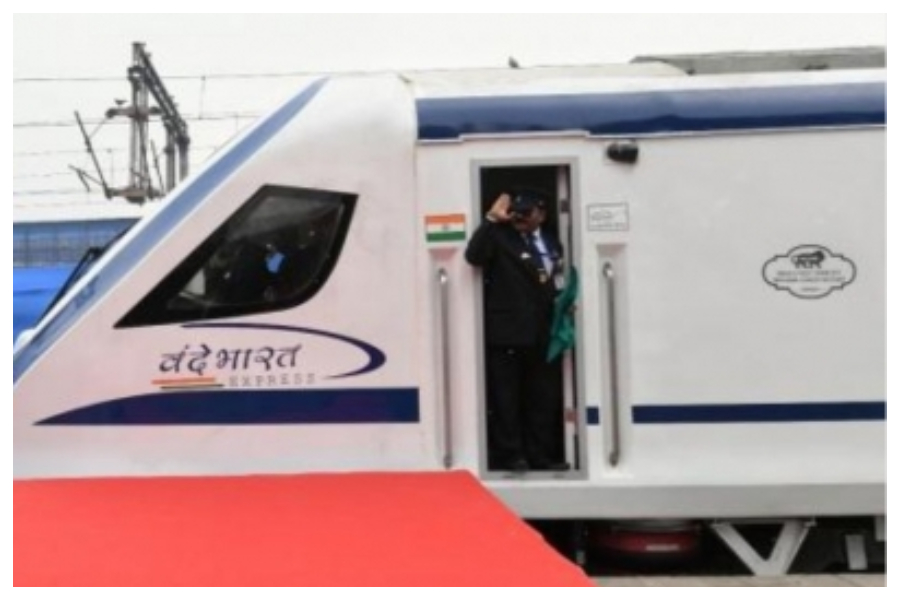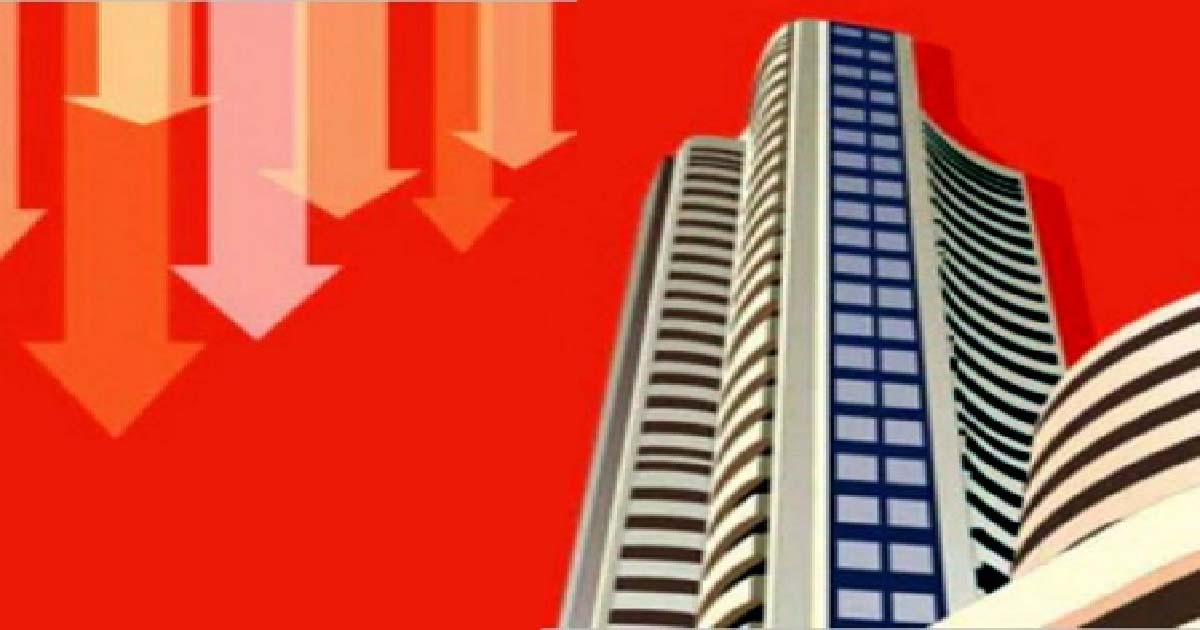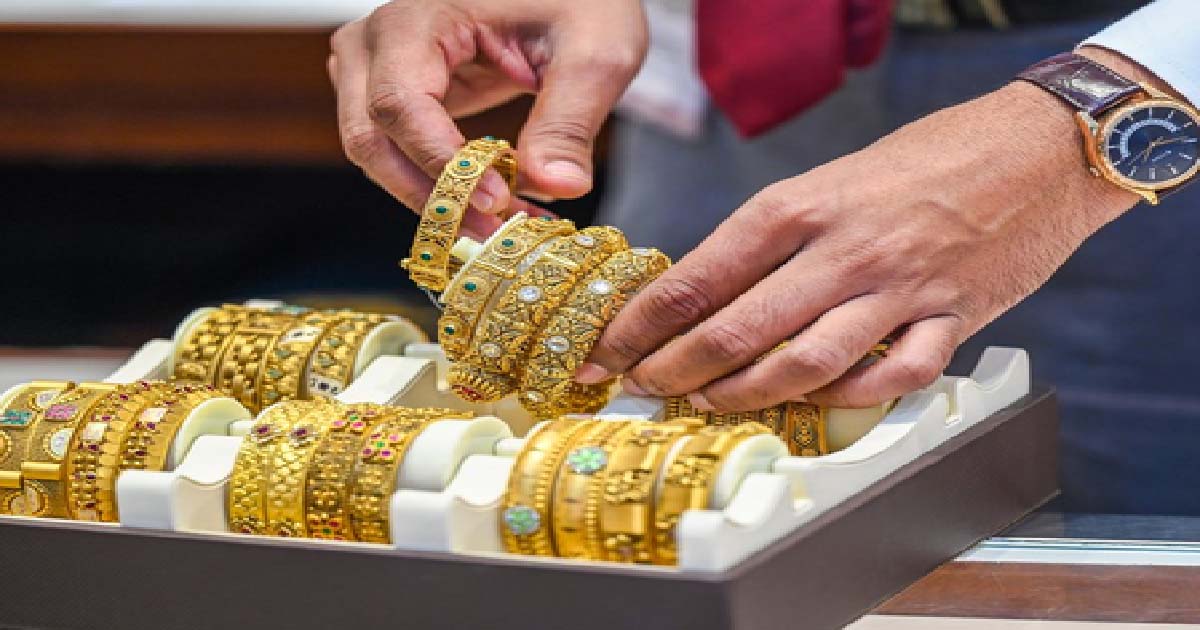Business
400 Vande Bharat trains: Rs 40,000 Cr business opportunity and jobs

Rolling out 400 Vande Bharat Express trains is about Rs 40,000 crore of business coupled with jobs and other spin-off benefits, said senior officials –present and past — of Indian Railways
Presenting the Union Budget for 2022-23, Indian Finance Minister Nirmala Sitharaman said 400 new energy efficient Vande Bharat trains will be introduced in three years.
The Vande Bharat Express is a semi-high speed train designed, developed and built by the Integral Coach Factory (ICF) at a frugal outlay of Rs 100 crore.
The Indian Railways officials preferring anonymity told IANS that 400 Vande Bharat trains over the next three years is not just headline catching announcement. It is about Rs 40,000 crore business opportunity that would also create 15,000 jobs and several spin -off benefits.
Presently there are only two Vande Bharat trains that are running — Delhi to Varanasi and Delhi to Katra.
“The trains without a pair are running six days a week without a breakdown till date since they were pressed into service a couple of years back. Perhaps Vande Bharat Express is the first train that is run without a pair,” a senior official at ICF told IANS with pride.
It is one classic example of ‘Make in India’ and far cheaper than similar trains that are rolled out by foreign companies.
The train has only about 15 per cent import content which will further go down if production volumes increase, officials told IANS earlier.
An ICF official said the third prototype is getting delayed due to production bottlenecks and logistical challenges due to the Covid-19 pandemic.
However, how the government is going to achieve its target of 400 Vande Bharat Express trains over the next three years is the Rs 40,000 crore question.
While it is really an ambitious target, it can be achieved in a staggered manner with the government giving better clarity on its plans, officials said.
Indian Railway Minister Ashwini Vaishnaw said the upgraded Vande Bharat train is expected to be ready for tests in April and commercial production is expected to start in August/September, 2022.
“I would think that a more realistic target of say 100-150 trains in three years would have been better. This target itself would need very concerted and committed action by railway executives, particularly at ICF,” Sudhanshu Mani, retired General Manager, ICF and the Creator of Vande Bharat Express told IANS.
He said, commercial production and necessary testing of the upgraded train is expected to start only in September 2022 and hence the target should be realistic.
“Rolling out the trains in large numbers may not be an issue. But where are they going to be deployed? The routes also have to be finalised,” Mani added.
Continuing further Mani said ICF should start working on Vande Bharat trainsets, including the sleeper version (code named Train 19) and 300 units of aluminium body trainsets (code named Train 20).
“There can be a foreign partner for rolling out aluminium body trains. In 5/6 year’s time 400 trains can be there,” he remarked.
When pointed out that the train could be rolled out by other coach manufacturing facilities in the country Mani said: “Initially only ICF should roll out as they understand the technology and other aspects. Spreading out the production to other units will result in quality issues.”
Concurring with him, a senior official not wanting to be quoted told IANS: “Only ICF should make it. It needs special skill sets and trained people are not available in other units.”
Officials also said spreading out the manufacturing not only would result in quality issues, but the ultimate death of the train that is successfully running without a hitch six days a week for the past couple of years.
While ICF would initially roll out the trainsets, the other units can take care of the maintenance works and acquire the production knowhow.
The other question is the availability of the vendors. Unless the government gives a clear roadmap, vendors may not ramp up their production capacity, officials said.
“The supply chain will take time to gear up. They can supply only at a steady rate. Out of the 400 trains, during the first year only 20 trains can be rolled out and 380 trains in the remaining two years is not possible,” the official added.
Further vendors and ICF officials are reluctant to touch the Vande Bharat train project after the witch hunt in the form of vigilance enquiry that was conducted and concluded recently without finding any discrepancy.
According to officials, there needs to be long term contracts — say 60 trains for the next 10 years — only then vendors can set up production facilities.
“Tenders and procurement process should be done in such a way that vendors can participate without worry,” they added.
Business
Groww shares drop over 9 pc, slip below Rs 1 lakh crore market cap

Mumbai, Nov 20: Groww’s share price continued to fall for the second day in a row on Thursday as investors booked profits after the stock’s strong rally last week.
The shares slipped as much as 9 per cent during early trade, touching an intra-day low of Rs 154.10 on the National Stock Exchange (NSE).
This is a 9.29 per cent drop from the previous day’s close.
During early trade, the market value of Billionbrains Garage Ventures — Groww’s parent company — fell to Rs 97,431.70 crore, slipping below the Rs 1 lakh crore mark.
The decline follows Wednesday’s sharp fall, when the stock hit the 10 per cent lower circuit on both the BSE and NSE, ending a five-day winning streak.
It closed at Rs 169.94 on the BSE and Rs 169.89 on the NSE in the previous trading session.
On Wednesday, the exchanges also revised Groww’s price band from 20 per cent to 10 per cent, limiting how much the stock can move in a single session.
The next key event for the stock is on Friday, November 21, when the company will announce its quarterly results — its first earnings report since listing last week.
Earlier, in a filing to the stock exchanges, Groww said its Board of Directors will meet on Friday, November 21, 2025, to consider and approve the unaudited standalone and consolidated financial results for the quarter and half year ended September 30, 2025.
Another important trigger is expected on December 10, when the one-month lock-in period for shareholders ends.
Groww, founded in 2016, is currently India’s largest stockbroker with more than 12.6 million active clients and a market share of over 26 percent as of June 2025.
Business
Sensex, Nifty Open Flat, Mixed Global Cues & Lack Of Major Domestic Triggers Keep Investor Sentiment Muted

Mumbai: Indian stock markets opened flat with a slight negative trend on Wednesday as mixed global cues and a lack of major domestic triggers kept investor sentiment muted. With the Q2 FY26 earnings season coming to an end, traders showed limited enthusiasm, leaving the indices stuck in a narrow range.
The Sensex slipped 81 points, or 0.10 per cent, to 84,592 in early trade. The Nifty also declined, dropping 34 points, or 0.13 per cent, to 25,877. “The broader benchmark Nifty 50 remains range-bound after the prior session, with resistance seen around 26,000–26,050 and near-term support in the 25,800–25,750 band — a potential accumulation zone for positional traders,” experts said. “Given this setup, a selective buy-on-dips strategy remains appropriate — apply tight trailing stop-losses, and book partial profits on rallies,” analysts mentioned.
Tata Motors PV, NTPC, Bajaj Finserv, Eternal and Sun Pharma were among the major drags on the Sensex. However, gains in HUL, Infosys, TCS, Tata Steel, Tech Mahindra, and Trent helped cushion the fall and prevented a deeper decline. In the broader market, the trend remained weak. The Nifty MidCap index slipped 0.06 per cent, while the Nifty SmallCap index fell 0.23 per cent. Sector-wise, the Nifty IT index was the only notable performer, rising 0.62 per cent as technology stocks saw selective buying.
On the other hand, real estate stocks struggled, with the Nifty Realty index emerging as the biggest loser, down 0.5 per cent. Analysts said markets may continue to remain rangebound in the absence of fresh triggers and ahead of global macroeconomic developments expected later this week. “Investors should prioritise safety at this juncture. Safety is in large caps. Large segments of the mid and small cap space are overvalued having been driven up only by liquidity flows from exuberant investors,” analysts said.
Business
Gold, silver tumble as hopes of December Fed Rate cut fade

Mumbai, Nov 18: Gold and silver prices dropped sharply in the domestic futures market on Tuesday morning as hopes of a US Federal Reserve rate cut in December faded and concerns over US tariffs eased.
This reduced the appeal of safe-haven assets like bullion. At early trade, MCX Gold December futures were trading 1.19 per cent lower at Rs 1,21,466 per 10 grams.
MCX Silver December contracts also declined 1.65 per cent to Rs 1,52,750 per kg.
“Gold has support at $4000-3965 while resistance at $4075-4110. Silver has support at $49.70-49.45 while resistance is at $50.75-51.10,” market watchers said.
“In INR gold has support at Rs1,22,350-1,21,780 while resistance at Rs1,23,750-1,24,500. Silver has support at Rs1,53,850-1,52,100 while resistance at Rs1,56,540, 1,57,280,” they added.
Internationally, gold prices slipped for the fourth straight session on Tuesday.
A stronger US dollar and weakening expectations of a rate cut next month continued to weigh on the metal.
The dollar index rose to 99.59, making gold more expensive for buyers using other currencies.
Gold, which is priced in US dollars, becomes costlier when the greenback strengthens, resulting in reduced demand.
The recent US government shutdown, which lasted a record 43 days, had delayed the release of important economic data, creating uncertainty about the condition of the world’s largest economy.
With the shutdown now over, attention has shifted to key data releases expected this week, including the September nonfarm payrolls report on Thursday.
These numbers will play a major role in shaping expectations around the US Federal Reserve’s next move on interest rates.
Meanwhile, Fed officials continue to send mixed signals on the future path of monetary policy, adding further uncertainty to the market.
With no major positive fundamental triggers in recent days, bulls remain hesitant—especially with both metals still trading at historically high levels.
“Traders now await a fresh round of US economic data later this week. Meanwhile, a firmer US Dollar Index and slightly higher 10-year Treasury yields added pressure to precious metals,” analysts said.
-

 Crime3 years ago
Crime3 years agoClass 10 student jumps to death in Jaipur
-

 Maharashtra1 year ago
Maharashtra1 year agoMumbai Local Train Update: Central Railway’s New Timetable Comes Into Effect; Check Full List Of Revised Timings & Stations
-

 Maharashtra1 year ago
Maharashtra1 year agoMumbai To Go Toll-Free Tonight! Maharashtra Govt Announces Complete Toll Waiver For Light Motor Vehicles At All 5 Entry Points Of City
-

 Maharashtra1 year ago
Maharashtra1 year agoFalse photo of Imtiaz Jaleel’s rally, exposing the fooling conspiracy
-

 National News1 year ago
National News1 year agoMinistry of Railways rolls out Special Drive 4.0 with focus on digitisation, cleanliness, inclusiveness and grievance redressal
-

 Maharashtra1 year ago
Maharashtra1 year agoMaharashtra Elections 2024: Mumbai Metro & BEST Services Extended Till Midnight On Voting Day
-

 National News1 year ago
National News1 year agoJ&K: 4 Jawans Killed, 28 Injured After Bus Carrying BSF Personnel For Poll Duty Falls Into Gorge In Budgam; Terrifying Visuals Surface
-

 Crime1 year ago
Crime1 year agoBaba Siddique Murder: Mumbai Police Unable To Get Lawrence Bishnoi Custody Due To Home Ministry Order, Says Report












